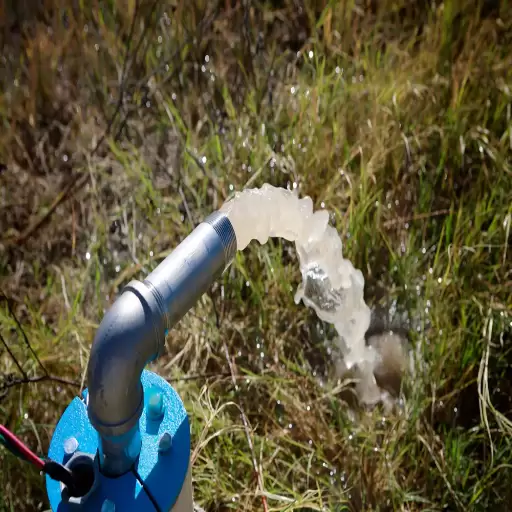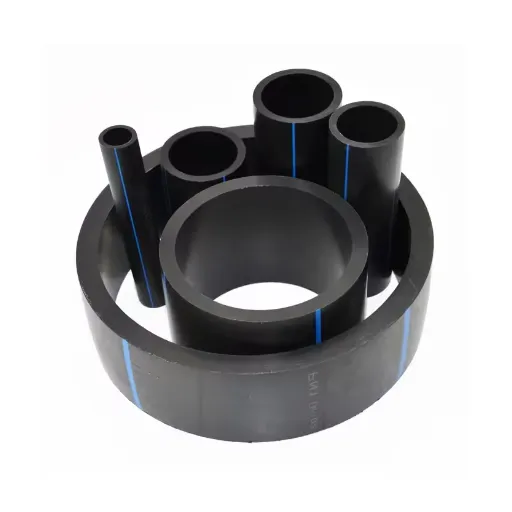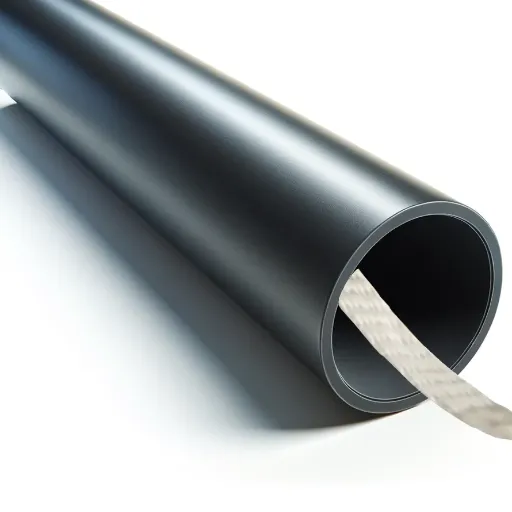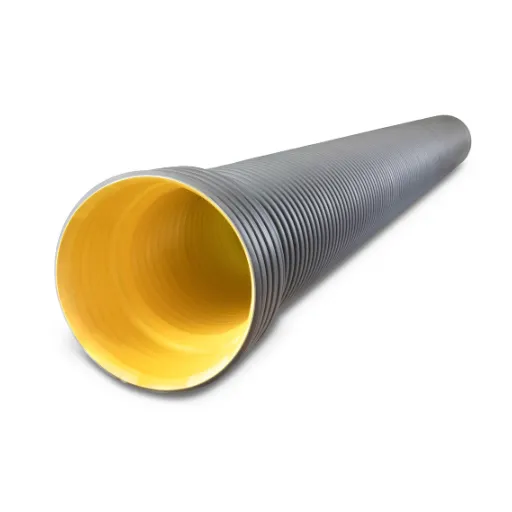Selecting the right materials and ensuring proper installation are two of the most critical steps for achieving a reliable and efficient water well system. Polyethylene (PE) well pipe has become a popular choice for submersible pump installations due to its durability, flexibility, and corrosion resistance. This guide will provide a comprehensive overview to help you understand the technical considerations involved in choosing the appropriate PE pipe, the factors influencing its performance, and the step-by-step process for installation. Whether you’re a contractor, an engineer, or a homeowner tackling a DIY project, this article will equip you with the knowledge and best practices necessary to optimize your well system’s functionality and longevity.
What’s the proper way to install polyethylene well pipe?
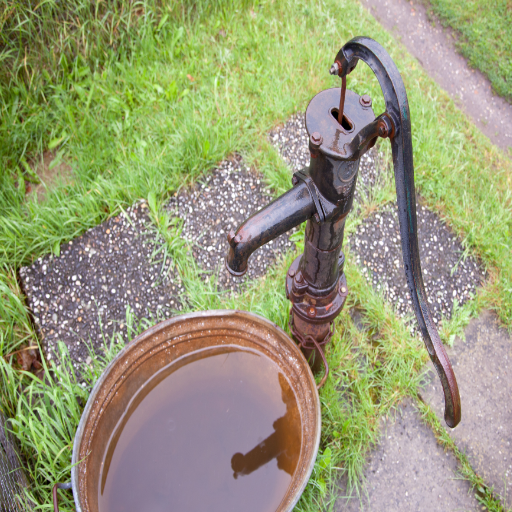
Essential fittings and tools for poly pipe installation
When it comes to installing polyethylene (PE) well pipes, the right selection of tools and fittings is essential for creating a strong, durable system.
- Barbed Insert Fittings: For establishing tension-free connections, barbed insert fittings are a must. Ensure there are fittings available in strong materials like brass or HDPE and also matched to the diameter of the pipe to avoid leaking.
- Hose Clamps: While using hose clamps, barbed fittings can be connected to the pipe with the help of stainless steel fasteners. Hose clamps need to be rust-less as two sticks might corrode in a trench or moist settings. Double-clamping each connection does tighten up security further.
- Polyethylene Pipe Cutter: Using Polyethylene Pipe Cutter increases the cutter’s chances of making straight cuts which minimizes the chances of leaks happening. Don’t use makeshift tools like hacksaws as these will make inadequate cuts that can ruin the integrity of the fitting.
- Torque Wrench: The use of torque wrenches lets the user tighten fittings to the appropriate torque requirements, which should be between 60-80 in-lbs for regular hose clamps, stopping both over-tightening and under-tightening.
- Pipe Weights or Cable Ties: For submersible pumps, to hold the pipe in place inside the well itself, cable or tie weights also prevent movement or wear and tear.
- Heat Source: In cases of a cold environment or inflexible pipe, a heat gun may be utilized to help soften the ends on the barbed fittings so they can be placed without damaging them.
Every tool and fitting provides specific attributes to achieve a sealed and strong connection. It is necessary to make sure that the pipe threads will fit the correct fittings because if it is not done, the system will most likely be damaged. These steps if followed will ensure the installation is correct and safe.
Tips for securing poly pipe to the submersible pump
Secure connection of the poly pipe to the submersible pump requires the correct fittings and processes to be done. First, it is important to confirm that the poly pipe diameter fits the barbed fittings that are meant for the pump. There are usually 1-inch, 1.25-inch, and 1.5-inch sizes available for domestic or agricultural use, however, always check the pump manufacturer’s information first.
The next step will require softening the ends of the poly pipe by dipping them in hot water (the best range is 120 degrees Fahrenheit to 150 degrees Fahrenheit). This makes the fitting process much easier and reduces the risk of damaging either the pipe or the barbs. Slide the pipe over the barbed fitting and make sure it seats completely.
Now, to strengthen the connection, hose clamps of appropriate pipe size need to be used. For higher corrosion resistance, stainless steel clamps are recommended. Based on pipe specifications and clamp size, the TPX alarm must be set to around 60 to 80 in-lb. That will make certain there are no leaks, and the connection is sturdy without risking primary deformation.
The last step includes checking the connection for leakages after the system has been pressurized to working pressure. By taking the right steps, long-term effective operation of the pump system is guaranteed.
How deep should I drill my well and what pipe length do I need?
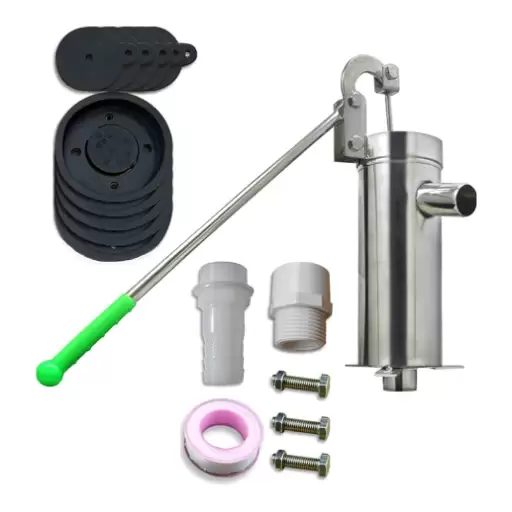
Understanding well depth and water table considerations
The local geology and the location of the water table determine how deep your well can go. The aquifer is usually the target, and well drilling typically happens between 100 to 500 feet deep. Depending on hydrogeological factors in your area, wells might be deeper or shallower. To determine how deep to drill:
- Water Table Depth: Determine the water table level in your area using surveys, or consult geological maps. Typically wells are drilled 10-20 feet under the static water level due to seasonal fluctuations.
- Aquifer Properties: Verify the target aquifer’s capacity to provide at the necessary flow rate and the required quality. This will require an assessment of transmissivity and storativity values.
- Pump Requirements: Consider the depth, as it will affect the pump; in particular, the power specifications and the level of use energy efficiency. For example, submersible pumps for wells greater than 300 feet deep may demand increased horsepower.
The optimal pipe length is to be in sync with the depth of the well and should cover the drilled distance to the pump while allowing a secure joint to be made at the pump and headworks. The pressure rating of the pipes should be compatible with the system requirements, typically Schedule 40 or 80 PVC or steel pipes for better compliance and durability. Proper resource allocation sets the foundation for pipe dimensions such as vapor and liquid flow. For example, larger diameter pipes will be needed to account for high flow rate vapor and to reduce head loss.
Calculating the required length of the drop pipe
To determine the necessary amount of drop pipe, I must first ascertain the total well depth along with the static water level. The drop pipe should be sufficient enough to cover the distance from the pump’s static position to just above the static water level to facilitate efficient water pumping. There are also further allowances to cater for water drawdown while pumping is in progress and potential dip of the pump so that it doesn’t cause too many operational issues.
- Well Depth: Distance from the ground level to the deepest point of the drilled well.
- Static Water Level: The vertical distance from the ground level to a rest water level in the well when the pump is inactive.
- Pump Submergence Depth: 10-20 feet under the maximum submergence drawdown limit.
- Flow Rate and Velocity: The diameter of the pipe should be large enough to allow unobstructed flow but with a balance to reduce friction losses.
- Safety Allowance: Approximately 10 percent of the pipe length should be added to cover faulty installation.
I can determine the adequate length of pipe needed when I take into account these factors while also providing adequate protection and risk mitigation for a system that has operational constraints.
What PSI rating should my good pipe have?
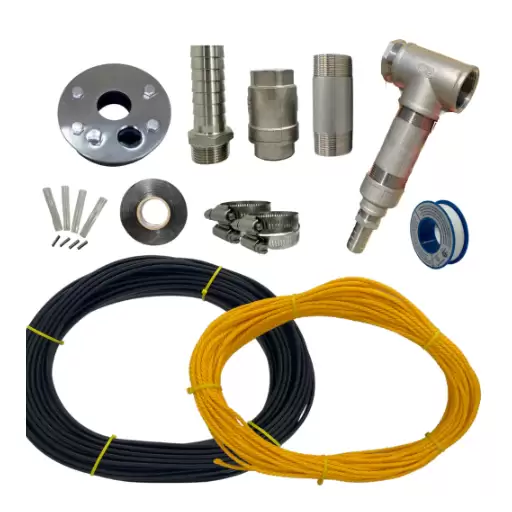
Explaining the 200 PSI rating for polyethylene pipes
Bursting pressure is used as one of the indicators of performance of polyethylene pipes which is rated at 200 PSI. This figure denotes the highest pressure a particular polyethylene pipe can withstand without being damaged during its standard operation. This rating is important for pipe selection in well systems because it guarantees their resistance to the permanent water pressure within the system.
- Sustained Water Pressure Burst Strength: This means that the particular pipe can burst at a sustained water pressure of 200 PSI. We have tested that this is lower than the upper indicated value of the normal operating range which is normally between two to three times the rated pressure.
- Temperature Tolerance: This assumes normal operating temperatures not exceeding 73°F (23°C). Using drastic measures is implemented since high temperatures will influence the pipe pressure capacity.
- Wall Thickness (SDR): The ratio of the pipe and its pressure rating is called the standard dimension ratio (SDR) which has a direct impact on the pipe’s ability to withstand pressure. It is common for a polyethylene pipe with a rating of 200 PSI to have a higher SDR value and for this reason in most cases, SDR 11 is used for such values.
- Material Properties: Polyethylene pipes bearing this rate are constructed using high-density polyethylene (HDPE) that possess excellent flexibility and impact-resistant properties as well as excellent resistance to pressure cracking and bursting.
A 200 PSI-rated pipe is ideal as it is suitable for normal well system demands and offers a safety margin over pressure fluctuations or transient surges. This makes it a dependable and sturdy selection.
Matching pipe pressure rating to a good depth and pump output
I choose the pipe pressure rating based on the well depth and the flow rate from the pump considering MAJOR parameters so that the system can work effectively and safely. First, I derive the total dynamic head (TDH) which is a sum of well depth, friction losses in the pipe, and any other pressure the system may require. For example, if the well has a depth of 150 ft along with a pump output of 10 GPM, I need to account for the pressure drop that accompanies this flow rate. Usually, the use of HDPE pipes with a rating of 200 PSI is enough to offer protection from transient pressure surges, as this rating is higher than the operating pressures usually experienced in domestic and agricultural settings.
- Static Water Level: Distance from the surface to the standing water level in the well.
- Pump Output Pressure: Should not exceed the pipe’s rated pressure.
- Pipe Friction Loss: This can be calculated in PSI per 100ft, for different flow rates and pipe diameters.
- Safety Gap: I make sure that I have a buffer of about 10-20% above the calculated maximum operating pressure including the TDH.
These factors explain why a 200 PSI-rated HDPE pipe is adequate mostly for all situations without additional costs for reduced flexibility, durability, and lower performance.
How do I connect poly pipe to other components in my well system?
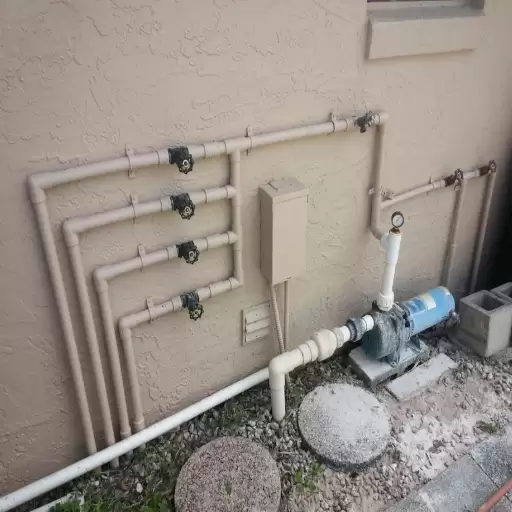
Joining poly pipe to the wellhead and pitless adapter
In attaching poly pipe to the wellhead and pitless adapter, my first task is to gather all the needed fittings and tools, which include stainless steel clamps and barbed connectors of the appropriate size for the poly pipe. A high-quality barbed fitting is used to attach the pipe to the well head. As always, proper installation is critical in connection with the fittings to prevent leaking and ensure sealing.
The process requires heating the poly pipe to make it soft, and en fully inserting the barbed fitting into the pipe. At the barbed connection, stainless steel clamps are fixed around the pipe to secure it. I then position the pitless adapter onto the pipe and fix it onto the pipe using a barbed connector. A threaded fitting can be used depending on the design of the adapter.
- Pipe Diameter: Ensure the pipe diameter is compatible with the barbed fittings, for example, 1 inch or 1-1/4 inches diameter are the standard sizes for most residential uses.
- Clamping Torque: The stainless steel clamps should be adjusted to the recommended clamping torque to ensure that they are not over-tightened (usually the clamp should not exceed 60-80 in-lbs) since it can cause damage to the pipe.
- Operating Pressure: Make sure the fittings and pipe are over the system’s maximum operating pressure for residential wells, which is commonly set at 100-150 PSI.
- Think About The Depth: For deep boreholes, ensure that the pipe and fittings will support the weight of the water head as well as the working conditions of the pump.
By following these steps and adhering to the guidelines, I can achieve a dependable and durable integration of the poly pipe with the wellhead and the pitless adapter.
Connecting poly pipe to PVC or copper plumbing
While my approach relies heavily on personally collected data, I incorporate several industry-standard practices to help with the integration of poly pipe with PVC or copper plumbing, such as:
- Choose Suitable Transition Fittings: The alteration union fittings that connect polyethylene to PVC or copper plumbing should be chosen with care. A barbed adaptor fitting is most often used when adjusting to PVC plastics, while copper plumbing is generally made to use compression or flare fittings. These fittings reduce the chance of leaking and cater to a snug fit.
- Correct Fitting Sizes: Remember to check the measurement of the diameters of the pipes and fittings that will be put into support. A typical example would be the most commonly used sizes in residential systems, which can vary anywhere between ½ inch, to as wide as 2 inches depending on the flow rate.
- Proper Tools and Pipe Cutting: Poly pipe should be cut with tools that will still leave the ends of the piping smooth, unlike saws, which will leave jagged edges that will complicate the connection. Also, the ends of the copper or PVC pipes should be prepared by dulling or rough sanding where deemed necessary.
- Clamping Mechanism: When connecting poly pipe I use clamps made from high-quality stainless steel, as they are bolstered against corrosion. The adjusting torque for the clamps should range between 60-80 in-lbs for a good fit without compromising the pipe.
- Operating Pressure Alignment: Check that the fittings and integrated system will support the maximum operating pressure of the system. For domestic systems, the working pressure is normally in the range of 40 to 60, but components are usually rated at 100 to 150 for safety.
- Thermal Expansion Considerations: I also consider, with the change of temperature, expansion due to heat. Poly pipe expands more than PVC and Copper, therefore the connections require a small degree of slack to mitigate the risk of long-term damage.
Employing these procedures within the defined technical enables me to safely connect poly pipes with a plumbing system made of PVC or copper while ensuring all joints are reliable and within the leakage-free pressure range.
What maintenance is required for polyethylene well pipes?
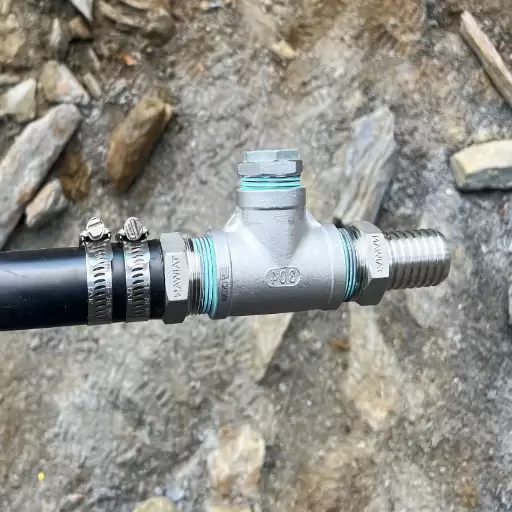
Signs of wear and when to replace well pipes
With time, polyethylene well pipes exhibit several indicators of wear which may necessitate their replacement. I check the pipe for cracks, deformities, or UV deterioration in instances where the pipe has been in the sun. Other major indicators include diminished water pressure, internal blockages, or minor leaks. In addition, excessive corrosion at the fittings or an excessive sediment level inside the pipe can negatively impact efficiency and strength.
- Wall Thickness Loss: If the wall thickness lost value is significant and beyond the original value, the replacement must take place to avert any chances of bursting under pressure.
- Drop in Pressure Rating: Based on the type of Polyethylene pipes, the pressure marked range can be between 160 – 250 PSI. Maintaining the pipe’s structural integrity is critical. During testing, if the rating fails, then the reliability of the system is unreliable.
- Constant High-Temperature Exposure: Overexposure of pipes to higher temperatures than the prescribed limits will deteriorate the structure of the pipe. The operational range for most to most pipes is 140 degrees Fahrenheit.
- Joint Gaps: Lastly, with compression fittings or fusion joints, if any misalignment occurs, then inefficiencies will prevail and lead to substantial leakage.
Adhering to these technical guidelines, coupled with constant monitoring of the operating status of the pipe over some time, provides insight into the replacement schedule well systems functions and efficiency.
Protecting poly pipes from UV damage and freezing
To avert the UV damage poly pipes are prone to, it is necessary to restrict continual contact with sunlight. Polyethylene’s molecular structure is weakened by UV radiation, which subsequently decreases its tensile strength and durability. Measures like burying the pipes underground, encasing the pipes with outer coatings that are resistant to UV, and using black PE pipes containing carbon black additives all serve to alleviate any UV harm. Unlike standard PE pipes, black PE pipes are black and contain carbon black which provides superior UV stabilization, increasing their level of resistance further.
With regards to dealing with the concern of areas freezing, it is important to make sure frost lines are maintained below pipe installations as this stops water inside the pipes from freezing and expanding which could lead to pipe damage. In places prone to occasional freezing, insulation wraps, heat tape or similar insulation materials can be used to cover the water pipe to prevent it from freezing. Disposing of boundaries of plumbing that will not be needed during freezing conditions also helps since any water that is left over has a chance of expansion.
- Limitations on Exposed Pipes: Without additives or guards meant to shield the pipes outdoors, poly pipes should not be exposed for more than 2,000 hours.
- Precautions Against The Freezing Point: Based on local specifics and the extent of ground freezes encountered, pipes should be placed at the most 12-18 inches under the frost lines.
- Operational Temperature Range: Maintain external temperatures above freezing (32°F/0°C) or utilize heat sources to sustain pipe temperature in extreme conditions.
The use of these technical controls increases the life and serviceability of poly pipes in different environments.
Reference sources
Frequently Asked Questions (FAQs)
Q: What type of pipe is best for a submersible well pump?
A: For submersible well pumps, polyethylene (PE) pipe is often the best choice. It’s durable, flexible, and resistant to corrosion, making it ideal for well-water systems. PE pipe is available in various sizes and pressure ratings, such as 160 PSI, to meet different water needs and well depths.
Q: How do I choose the right size polyethylene pipe for my well pump?
A: To choose the right size PE pipe, consider factors like your well pump’s flow rate, the depth of your well, and your household’s water needs. Common sizes include 1″ and 1.25″ IPS (Iron Pipe Size). Consult with a professional or use online calculators to determine the best size for your specific setup.
Q: Is polyethylene pipe safe for potable water?
A: Yes, polyethylene pipe is safe for potable water when it’s certified by NSF International. Look for pipes labeled as NSF-61 certified, which ensures they meet strict standards for use with drinking water. This certification guarantees that the pipe won’t leach harmful substances into your well water.
Q: How do I install a polyethylene well pipe for a deep well pump?
A: To install PE pipe for a deep well pump: 1. Measure the well depth and cut the pipe to length, allowing extra connections. 2. Attach the pipe to the pump using appropriate fittings. 3. Lower the pump and pipe into the well, securing it to the well cap. 4. Connect the pipe to your pressure tank and water treatment systems. 5. Ensure all connections are tight to prevent leaks. Always follow local regulations and consider hiring a professional to get the job done safely.
Q: Can I use PEX pipe instead of polyethylene for my well pump?
A: While PEX pipe is excellent for indoor plumbing, it’s not typically recommended for submersible well pumps. Polyethylene pipe is more suitable for this application due to its higher durability and resistance to environmental factors. Stick with PE pipe for the best results in your well water system.
Q: How often should I perform well maintenance when using polyethylene pipe?
A: Regular well maintenance is crucial for ensuring water quality and system longevity. With polyethylene pipe, you should: 1. Inspect the well cap and connections annually. 2. Test your water quality at least once a year. 3. Check the pressure tank and valve operations every 6-12 months. 4. Flush the system as needed, typically every 3-5 years. 5. Have a professional inspection every 3-5 years or if you notice changes in water quality or pressure.
Q: Can I drill a well and install a polyethylene pipe myself?
A: While it’s possible to drill a well and install polyethylene pipe as a DIY project, it’s not recommended for most homeowners. Well, drilling requires specialized equipment and expertise. Additionally, improper installation can lead to contamination or system failures. It’s best to hire a professional well driller and installer to ensure your well meets all local regulations and functions properly.
Q: How do I connect polyethylene pipe to my pressure tank and other components?
A: To connect polyethylene pipe to your pressure tank and other components: 1. Use appropriate fittings designed for PE pipe, such as compression or insert fittings. 2. Ensure the pipe end is cut square and free of burrs. 3. If using compression fittings, slide the nut and ferrule onto the pipe before inserting it into the fitting body. 4. Tighten connections according to manufacturer specifications. 5. For transitions to other materials like PEX or copper, use suitable transition fittings. Always double-check your connections to prevent leaks and ensure a proper seal.



